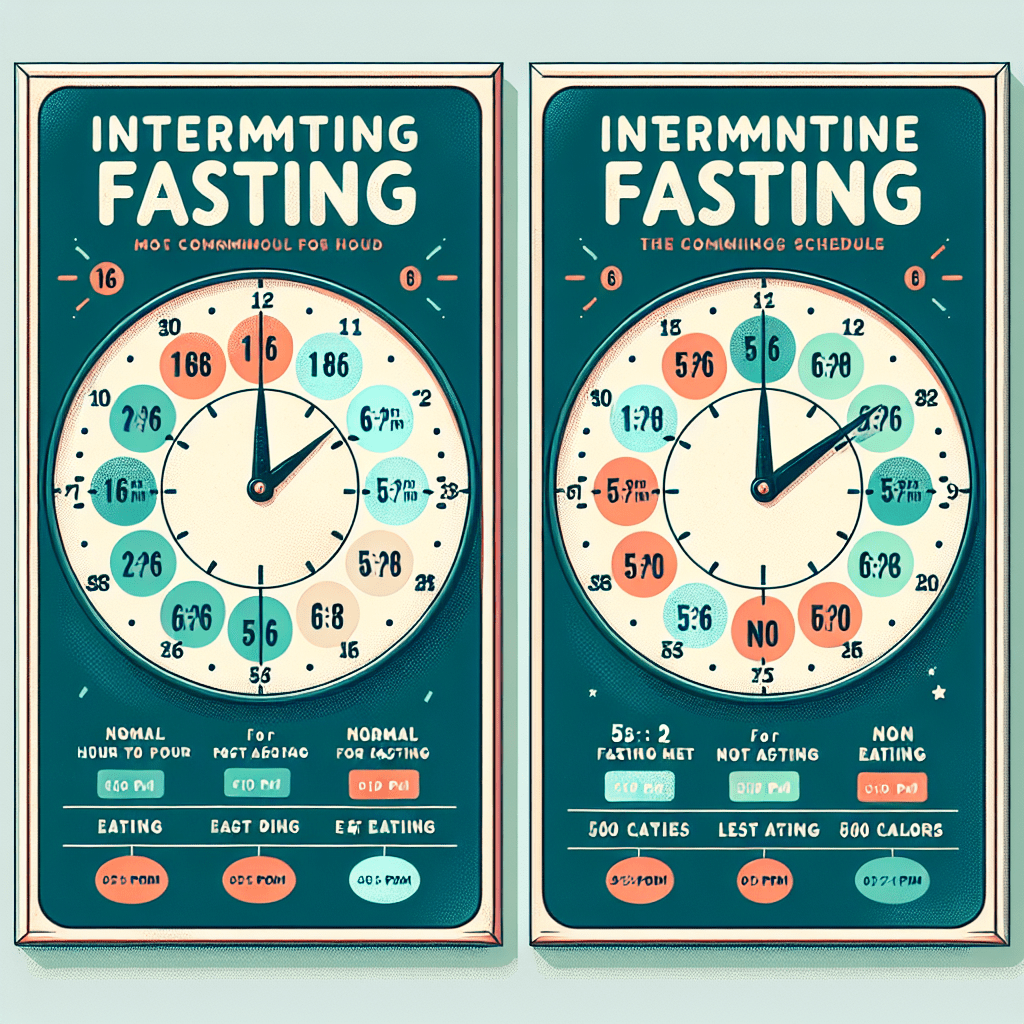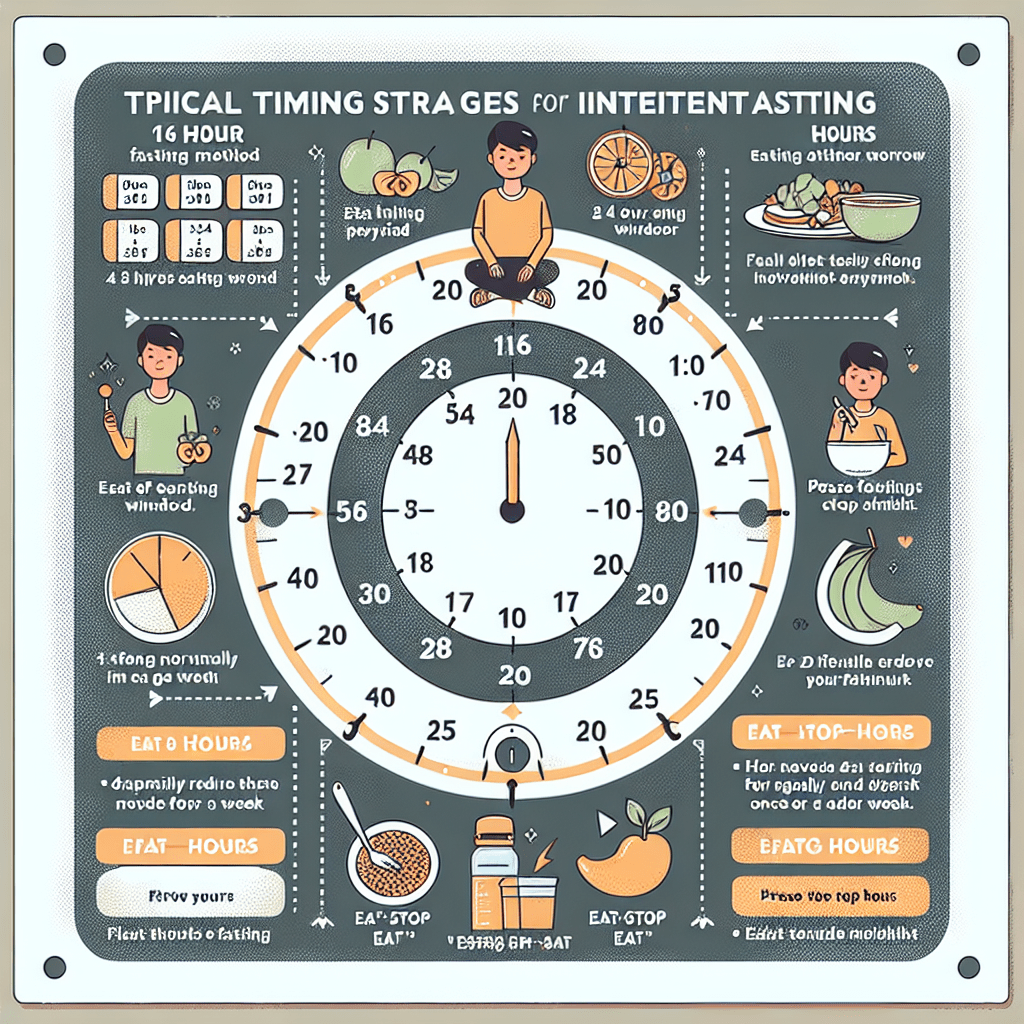-
Table of Contents
What are the Best Timings for Intermittent Fasting to lose weight?
What are the Best Timings for Intermittent Fasting to lose weight?
Intermittent fasting has gained significant popularity in recent years as a weight loss and health management strategy. It involves alternating periods of fasting and eating, with the aim of optimizing metabolic processes and promoting overall well-being. While the concept of intermittent fasting is relatively simple, determining the best timings for fasting can be a bit more complex. In this article, we will explore different fasting schedules and their potential benefits, backed by research and expert opinions.
The Basics of Intermittent Fasting
Before diving into the best timings for intermittent fasting, let’s briefly understand the basics of this dietary approach. Intermittent fasting involves cycling between periods of eating and fasting. The most common fasting schedules include:
- 16/8 Method: This method involves fasting for 16 hours and restricting your eating window to 8 hours each day. For example, you might choose to eat between 12 pm and 8 pm, and fast for the remaining 16 hours.
- 5:2 Diet: With this approach, you eat normally for five days of the week and restrict your calorie intake to 500-600 calories for the remaining two non-consecutive days.
- Alternate-Day Fasting: As the name suggests, this method involves fasting every other day, where you consume little to no calories on fasting days and eat normally on non-fasting days.
Now that we have a basic understanding of intermittent fasting, let’s explore the best timings for each fasting schedule.
Best Timings for the 16/8 Method
The 16/8 method is one of the most popular and easiest fasting schedules to follow. It offers flexibility in choosing the eating window, making it suitable for different lifestyles. However, there are certain timings that may be more beneficial for maximizing the effects of intermittent fasting.
Research suggests that aligning your eating window with your body’s natural circadian rhythm can yield better results. The circadian rhythm is the internal clock that regulates various physiological processes, including metabolism. Therefore, it is recommended to have your eating window during daylight hours, preferably between 12 pm and 8 pm. This aligns with the body’s natural tendency to be more insulin sensitive earlier in the day, which can aid in weight loss and metabolic health.
However, it’s important to note that individual preferences and schedules may vary. Some people may find it more convenient to have their eating window in the morning or evening. The key is to find a timing that works best for you and allows you to adhere to the fasting schedule consistently.
Best Timings for the 5:2 Diet
The 5:2 diet involves restricting calorie intake to 500-600 calories for two non-consecutive days of the week, while eating normally on the remaining five days. The flexibility of this approach allows individuals to choose the fasting days that suit their schedule. However, it is important to consider the potential benefits of specific fasting day timings.
Some studies suggest that spreading out the fasting days throughout the week may be more effective than consecutive fasting days. For example, fasting on Mondays and Thursdays rather than on consecutive days. This approach allows for better recovery and reduces the risk of nutrient deficiencies that may occur with prolonged fasting.
Additionally, it is recommended to have a balanced meal the day before and after the fasting days to ensure adequate nutrient intake. This can help maintain energy levels and support overall well-being during the fasting period.
Best Timings for Alternate-Day Fasting
Alternate-day fasting involves fasting every other day, with little to no calorie intake on fasting days. On non-fasting days, individuals can eat normally. This fasting schedule can be challenging for some people due to the prolonged fasting periods. However, there are certain timings that can make it more manageable and effective.
Research suggests that starting the fasting period after dinner on the fasting day and breaking the fast with breakfast on the non-fasting day can be beneficial. This allows for a longer overnight fasting period and aligns with the body’s natural circadian rhythm. It is important to ensure that the eating window on non-fasting days is not excessive to maintain the calorie deficit required for weight loss.
Conclusion
Intermittent fasting is a flexible and effective dietary approach for weight loss and overall health. The best timings for intermittent fasting depend on the specific fasting schedule chosen. For the 16/8 method, aligning the eating window with the body’s circadian rhythm, preferably between 12 pm and 8 pm, can yield better results. For the 5:2 diet, spreading out the fasting days throughout the week and having balanced meals before and after fasting days is recommended. For alternate-day fasting, starting the fasting period after dinner and breaking the fast with breakfast can be beneficial.
Ultimately, the best timings for intermittent fasting may vary for each individual. It is important to listen to your body, experiment with different timings, and choose a schedule that is sustainable and suits your lifestyle. Consulting with a healthcare professional or a registered dietitian can also provide personalized guidance and support in implementing intermittent fasting safely and effectively.




